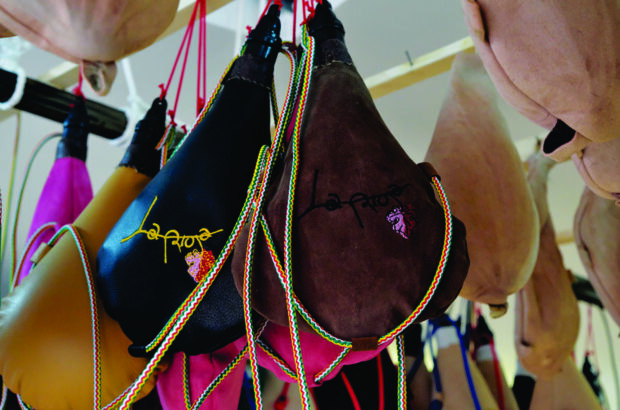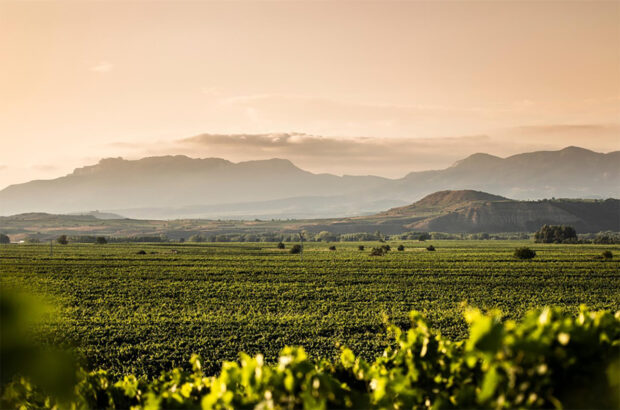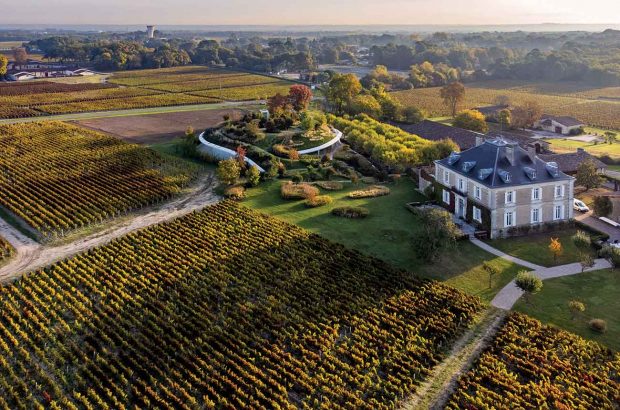While non-vintage (NV) is formally recognised as the mainstay of Champagne, it may seem odd that there is no equivalent recognition, by the authorities at least, for its well-groomed sibling, ‘multi-vintage’ (MV).
The dominance of the NV category seems, if anything, to be hardening (see ‘Shipments by category’ table), with MV not getting a look in. At 78.5% of total shipments in 2020 for all NV, that’s a huge volume of bottles, each having a story to tell.
Scroll down to see tasting notes and scores for 10 top non-vintage / multi-vintage Champagnes
Recently, however, there has been a quiet revolution, in the top echelons at least, with the aim of recognising, promoting and celebrating the diversity on display.
Non-vintage, if one stares hard at the term, is something of an empty phrase – of course there has been a vintage involved in the process! What’s more, all growers will, by definition, use more than one vintage in their NV wine – multi-vintage, in other words.
{"content":"PHA+SXQgc2VlbXMsIGF0IGZpcnN0IGJsdXNoLCBxdWl0ZSBsb2dpY2FsIHRvIGdpdmUgbW9yZSByZWNvZ25pdGlvbiB0byB0aGlzIHRlcm0uPC9wPgo8cD48ZGl2IGNsYXNzPSJhZC1jb250YWluZXIgYWQtY29udGFpbmVyLS1tb2JpbGUiPjxkaXYgaWQ9InBvc3QtaW5saW5lLTIiIGNsYXNzPSJpcGMtYWR2ZXJ0Ij48L2Rpdj48L2Rpdj48L3A+CjxwPkNoYW1wYWduZSwgc2F5IGl0cyBkZWZlbmRlcnMsIHNob3VsZCBiZSBzZWVuIGFzIG1vcmUgdGhhbiBhIHNpbXBsZSA8c3Ryb25nPjxhIGhyZWY9Imh0dHBzOi8vd3d3LmRlY2FudGVyLmNvbS93aW5lLXJldmlld3MtdGFzdGluZ3Mvc3BhcmtsaW5nLXdpbmUvIj5zcGFya2xpbmcgd2luZTwvYT48L3N0cm9uZz4gdXNlZCB0byBsdWJyaWNhdGUgYSB0aG91c2FuZCBkcmlua3MgcmVjZXB0aW9ucywgYW5kIHRodXMgbGl0dGxlIGRpZmZlcmVudCBmcm9tIHNvIG1hbnkgZml6enkgd2luZXMgYXJvdW5kIHRoZSB3b3JsZDogQ2hhbXBhZ25lIGlzIG1vcmUgY29tcGxleDsgQ2hhbXBhZ25lIGlzIGRpZmZlcmVudCYjODIzMDs8L3A+CjxwPjxpbWcgZmV0Y2hwcmlvcml0eT0iaGlnaCIgZGVjb2Rpbmc9ImFzeW5jIiBjbGFzcz0ibGF6eWxvYWQgYmx1ci11cCBhbGlnbmNlbnRlciB3cC1pbWFnZS00Njg5NjEgc2l6ZS1sYXJnZSIgZGF0YS1wcm9jZXNzZWQgc3JjPSJodHRwczovL3d3dy5kZWNhbnRlci5jb20vd3AtY29udGVudC90aGVtZXMvc2ltYmEtdGhlbWUvYXNzZXRzL2ltYWdlcy9wbGFjZWhvbGRlci5wbmciIGRhdGEtc3JjPSJodHRwczovL2tleWFzc2V0cy50aW1laW5jdWsubmV0L2luc3BpcmV3cC9saXZlL3dwLWNvbnRlbnQvdXBsb2Fkcy9zaXRlcy8zNC8yMDIxLzExL0dsb2JhbC1DaGFtcGFnbmUtc2hpcG1lbnRzLWJ5LWNhdGVnb3J5LTYzMHg0MTcuanBnIiBhbHQ9Ikdsb2JhbCBDaGFtcGFnbmUgc2hpcG1lbnRzIGJ5IGNhdGVnb3J5IiB3aWR0aD0iNjMwIiBoZWlnaHQ9IjQxNyIgZGF0YS1zaXplcz0iYXV0byIgZGF0YS1zcmNzZXQ9Imh0dHBzOi8va2V5YXNzZXRzLnRpbWVpbmN1ay5uZXQvaW5zcGlyZXdwL2xpdmUvd3AtY29udGVudC91cGxvYWRzL3NpdGVzLzM0LzIwMjEvMTEvR2xvYmFsLUNoYW1wYWduZS1zaGlwbWVudHMtYnktY2F0ZWdvcnktNjMweDQxNy5qcGcgNjMwdywgaHR0cHM6Ly9rZXlhc3NldHMudGltZWluY3VrLm5ldC9pbnNwaXJld3AvbGl2ZS93cC1jb250ZW50L3VwbG9hZHMvc2l0ZXMvMzQvMjAyMS8xMS9HbG9iYWwtQ2hhbXBhZ25lLXNoaXBtZW50cy1ieS1jYXRlZ29yeS0zMDB4MTk5LmpwZyAzMDB3LCBodHRwczovL2tleWFzc2V0cy50aW1laW5jdWsubmV0L2luc3BpcmV3cC9saXZlL3dwLWNvbnRlbnQvdXBsb2Fkcy9zaXRlcy8zNC8yMDIxLzExL0dsb2JhbC1DaGFtcGFnbmUtc2hpcG1lbnRzLWJ5LWNhdGVnb3J5LTEzNXg4OS5qcGcgMTM1dywgaHR0cHM6Ly9rZXlhc3NldHMudGltZWluY3VrLm5ldC9pbnNwaXJld3AvbGl2ZS93cC1jb250ZW50L3VwbG9hZHMvc2l0ZXMvMzQvMjAyMS8xMS9HbG9iYWwtQ2hhbXBhZ25lLXNoaXBtZW50cy1ieS1jYXRlZ29yeS0zMjB4MjEyLmpwZyAzMjB3LCBodHRwczovL2tleWFzc2V0cy50aW1laW5jdWsubmV0L2luc3BpcmV3cC9saXZlL3dwLWNvbnRlbnQvdXBsb2Fkcy9zaXRlcy8zNC8yMDIxLzExL0dsb2JhbC1DaGFtcGFnbmUtc2hpcG1lbnRzLWJ5LWNhdGVnb3J5LTYyMHg0MTAuanBnIDYyMHcsIGh0dHBzOi8va2V5YXNzZXRzLnRpbWVpbmN1ay5uZXQvaW5zcGlyZXdwL2xpdmUvd3AtY29udGVudC91cGxvYWRzL3NpdGVzLzM0LzIwMjEvMTEvR2xvYmFsLUNoYW1wYWduZS1zaGlwbWVudHMtYnktY2F0ZWdvcnktOTIweDYwOS5qcGcgOTIwdywgaHR0cHM6Ly9rZXlhc3NldHMudGltZWluY3VrLm5ldC9pbnNwaXJld3AvbGl2ZS93cC1jb250ZW50L3VwbG9hZHMvc2l0ZXMvMzQvMjAyMS8xMS9HbG9iYWwtQ2hhbXBhZ25lLXNoaXBtZW50cy1ieS1jYXRlZ29yeS5qcGcgMTAwMHciIHNpemVzPSIobWF4LXdpZHRoOiA2MzBweCkgMTAwdncsIDYzMHB4IiAvPjwvcD4KPGgzPjxzdHJvbmc+RW5kL2JlZ2lubmluZyBvZiBhbiBlcmE8L3N0cm9uZz48L2gzPgo8cD5UaGUgRnJlbmNoIHRlcm0g4oCYYnJ1dCBzYW5zIGFubsOpZeKAmSBpcyBtYXliZSBhIGxpdHRsZSBjbGVhcmVyLCBidXQgb25seSBqdXN0LiBBbmQgaXQgaXMgYWdhaW5zdCB0aGlzIHRlcm0gdGhhdCBDaGFtcGFnbmUgTG91aXMgUm9lZGVyZXIgY2hlZiBkZSBjYXZlIEplYW4tQmFwdGlzdGUgTMOpY2FpbGxvbiBoYXMgbGF1bmNoZWQgaGlzIG5vdyBvZnQtcXVvdGVkIGJyb2Fkc2lkZS4g4oCYVGhpcyBpcyB0aGUgZW5kIG9mIHRoZSBlcmEgZm9yIGJydXQgc2FucyBhbm7DqWUs4oCZIGhlIGhhcyBkZWNsYXJlZDsg4oCYdGhpcyBpcyB0aGUgbmV3IGVyYSBvZiB0aGUgbXVsdGktdmludGFnZS7igJk8L3A+CjxkaXYgY2xhc3M9ImFkLWNvbnRhaW5lciBhZC1jb250YWluZXItLW1vYmlsZSI+PGRpdiBpZD0icG9zdC1pbmxpbmUtMyIgY2xhc3M9ImlwYy1hZHZlcnQiPjwvZGl2PjwvZGl2Pgo8cD5IaXMgY29tbWVudHMgd2VyZSBtYWRlIGF0IHRoZSBKdWx5IGxhdW5jaCBvZiA8c3Ryb25nPjxhIGhyZWY9Imh0dHBzOi8vd3d3LmRlY2FudGVyLmNvbS9wcmVtaXVtL2ZpcnN0LXRhc3RlLWxvdWlzLXJvZWRlcmVyLWNvbGxlY3Rpb24tMjQyLTQ2MjQ5NC8iPlJvZWRlcmVy4oCZcyBDb2xsZWN0aW9uIDI0MjwvYT48L3N0cm9uZz4sIGEgd2luZSB3aGljaCByZXBsYWNlcyBpdHMgbG9uZy1lc3RhYmxpc2hlZCBCcnV0IFByZW1pZXIgY3V2w6llLiBBIGJyYXZlIG1vdmU\/IEZvciBzdXJlJiM4MjMwOyBCdXQgYWxzbyBjb21tZXJjaWFsbHkgYWRyb2l0IChhdCDCozUyLCB0aGUgbmV3IHdpbmUgaXMgcHJpY2VkIGF0IMKjNCBtb3JlIHRoYW4gaXRzIGZvcmViZWFyKSwgYW5kIG9uZSB3aGljaCBjZW1lbnRzIEzDqWNhaWxsb27igJlzIHBvc2l0aW9uIGFzIHRoZSBtb3N0IGluZmx1ZW50aWFsIHdpbmVtYWtlciBvZiBoaXMgZ2VuZXJhdGlvbi4gVGhlIOKAmHByZW1pdW1pc2F0aW9u4oCZIG9mIHRoZSB0b3AgZW5kIG9mIGEgc3ByYXdsaW5nIGNhdGVnb3J5PyBUaGF0IGFwcGVhcnMgdG8gYmUgdGhlIGdvYWwuPC9wPgo8cD5Ud28ga2V5IHF1ZXN0aW9ucyBuZWVkIHRvIGJlIGFza2VkLCBob3dldmVyLiBGaXJzdGx5LCBpcyB0aGlzIGFjdHVhbGx5IG5ldzsgaXMgdGhlIGZhbmZhcmUgYW5kIHRoZSB1c2Ugb2YgdGVybXMgc3VjaCBhcyDigJhyZXZvbHV0aW9u4oCZIG92ZXItZWdnaW5nIHRoZSBwdWRkaW5nPyBTZWNvbmRseSwgaG93IGhhcyBpdCBiZWVuIHJlY2VpdmVkIGluIENoYW1wYWduZT88L3A+CjxkaXYgY2xhc3M9ImFkLWNvbnRhaW5lciBhZC1jb250YWluZXItLW1vYmlsZSI+PGRpdiBpZD0icG9zdC1pbmxpbmUtNCIgY2xhc3M9ImlwYy1hZHZlcnQiPjwvZGl2PjwvZGl2Pgo8cD5DYW52YXNzaW5nIG9waW5pb24gaGFzIHRocm93biB1cCBkaXZlcnNlIGFuZCBmYXNjaW5hdGluZyB2aWV3cywgbm90IG5lY2Vzc2FyaWx5IGFsbCBzaW5naW5nIGluIHRoZSBzYW1lIGtleSwgYnV0IGdlbmVyYWxseSwgdW5zdXJwcmlzaW5nbHksIGFncmVlaW5nIHdpdGggdGhlIHNwaXJpdCBvZiB3aGF0IGlzLCBpbiBlc3NlbmNlLCBhbiBlbmRvcnNlbWVudCBvZiB0aGUgc2luZ3VsYXIgYXBwZWFsIG9mIENoYW1wYWduZSBhcyBhIHN1cGVyaW9yIHByb2R1Y3QuPC9wPgo8cD5SZXN0aW5nIG9uIGxhdXJlbHMsIGVzcGVjaWFsbHkgaW4gc3VjaCB0ZXN0aW5nIHRpbWVzLCBpcyBub3QgYW4gb3B0aW9uLiBDaGFtcGFnbmUgc2hpcG1lbnRzIGZlbGwgYnkgMTcuNiUgaW4gMjAyMCAoPGVtPnNlZSDigJhHbG9iYWwgc2hpcG1lbnRz4oCZLCBiZWxvdzwvZW0+KSwgYW5kIGFsdGhvdWdoIHRoaXMgeWVhcuKAmXMgbnVtYmVycyBhcmUgbG9va2luZyBtb3JlIHByb21pc2luZywgdGhlIENoYW1wZW5vaXMgYXJlIGFsd2F5cyBrZWVuIHRvIHVuZGVybGluZSB0aGUgZGlmZmVyZW5jZSBiZXR3ZWVuIHRoZWlyIHByb2R1Y3QgYW5kIGFsbCBwb3RlbnRpYWwgcml2YWxzLiBBbGwgdGhlIG1vcmUgc28gZ2l2ZW4gdGhlIDIwMjEgaGFydmVzdCBsb29rcyBzZXQgdG8gYmUgdGhlIHNob3J0ZXN0IHNpbmNlIDE5ODEsIHdpdGggeWllbGRzIHNldCB0byBmYWxsIGJ5IGEgd2hvcHBpbmcgNjAlLiBJdCBtYXkganVzdCBiZSB0aGF0IHRoaXMg4oCYcmVhcHByYWlzYWzigJkgaXMgdGhlIHdheSB0byBjZW1lbnQgdGhlIHJlZ2lvbuKAmXMgcmVwdXRhdGlvbiBhcyBwcmltdXMgaW50ZXIgcGFyZXMmIzgyMzA7PC9wPgo8ZGl2IGNsYXNzPSJhZC1jb250YWluZXIgYWQtY29udGFpbmVyLS1tb2JpbGUiPjxkaXYgaWQ9InBvc3QtaW5saW5lLTUiIGNsYXNzPSJpcGMtYWR2ZXJ0Ij48L2Rpdj48L2Rpdj4KPHA+QW55dGhpbmcgbmV3PyBXZWxsLCBpbiBlc3NlbmNlLCBubywgYmVjYXVzZSBhbGwgTlYgQ2hhbXBhZ25lcyBpbmNsdWRlIG1vcmUgdGhhbiBvbmUgdmludGFnZSBpbiB0aGVpciBibGVuZCBhbmQgYXJlIHRoZXJlZm9yZSBhbGwgbXVsdGktdmludGFnZS4gVGhlIGtleSBkaWZmZXJlbmNlIGlzIG9uZSBvZiBlbXBoYXNpcywgd2l0aCBmYXIgbW9yZSBzdHJlc3Mgb24gdGhlIG9sZGVyIHJlc2VydmUgd2luZXMgYW5kLCBwb3NzaWJseSBldmVuIG1vcmUgZnVuZGFtZW50YWxseSwgYSBzaGlmdCBhd2F5IGZyb20gdGhlIGF4aW9tYXRpYyBzdHJlc3Mgb24gY29uc2lzdGVuY3ksIHllYXItaW4teWVhci1vdXQsIGluIHRoZSBzdHlsZSBvZiB0aGUgZmxhZ3NoaXAgd2luZXMuPC9wPgo8cD48aW1nIGRlY29kaW5nPSJhc3luYyIgY2xhc3M9Imxhenlsb2FkIGJsdXItdXAgYWxpZ25jZW50ZXIgd3AtaW1hZ2UtNDY4OTYzIHNpemUtbGFyZ2UiIGRhdGEtcHJvY2Vzc2VkIHNyYz0iaHR0cHM6Ly93d3cuZGVjYW50ZXIuY29tL3dwLWNvbnRlbnQvdGhlbWVzL3NpbWJhLXRoZW1lL2Fzc2V0cy9pbWFnZXMvcGxhY2Vob2xkZXIucG5nIiBkYXRhLXNyYz0iaHR0cHM6Ly9rZXlhc3NldHMudGltZWluY3VrLm5ldC9pbnNwaXJld3AvbGl2ZS93cC1jb250ZW50L3VwbG9hZHMvc2l0ZXMvMzQvMjAyMS8xMS9HbG9iYWwtQ2hhbXBhZ25lLXNoaXBtZW50cy02MzB4MjU3LmpwZyIgYWx0PSJHbG9iYWwgQ2hhbXBhZ25lIHNoaXBtZW50cyIgd2lkdGg9IjYzMCIgaGVpZ2h0PSIyNTciIGRhdGEtc2l6ZXM9ImF1dG8iIGRhdGEtc3Jjc2V0PSJodHRwczovL2tleWFzc2V0cy50aW1laW5jdWsubmV0L2luc3BpcmV3cC9saXZlL3dwLWNvbnRlbnQvdXBsb2Fkcy9zaXRlcy8zNC8yMDIxLzExL0dsb2JhbC1DaGFtcGFnbmUtc2hpcG1lbnRzLTYzMHgyNTcuanBnIDYzMHcsIGh0dHBzOi8va2V5YXNzZXRzLnRpbWVpbmN1ay5uZXQvaW5zcGlyZXdwL2xpdmUvd3AtY29udGVudC91cGxvYWRzL3NpdGVzLzM0LzIwMjEvMTEvR2xvYmFsLUNoYW1wYWduZS1zaGlwbWVudHMtMzAweDEyMi5qcGcgMzAwdywgaHR0cHM6Ly9rZXlhc3NldHMudGltZWluY3VrLm5ldC9pbnNwaXJld3AvbGl2ZS93cC1jb250ZW50L3VwbG9hZHMvc2l0ZXMvMzQvMjAyMS8xMS9HbG9iYWwtQ2hhbXBhZ25lLXNoaXBtZW50cy0xMzV4NTUuanBnIDEzNXcsIGh0dHBzOi8va2V5YXNzZXRzLnRpbWVpbmN1ay5uZXQvaW5zcGlyZXdwL2xpdmUvd3AtY29udGVudC91cGxvYWRzL3NpdGVzLzM0LzIwMjEvMTEvR2xvYmFsLUNoYW1wYWduZS1zaGlwbWVudHMtMzIweDEzMS5qcGcgMzIwdywgaHR0cHM6Ly9rZXlhc3NldHMudGltZWluY3VrLm5ldC9pbnNwaXJld3AvbGl2ZS93cC1jb250ZW50L3VwbG9hZHMvc2l0ZXMvMzQvMjAyMS8xMS9HbG9iYWwtQ2hhbXBhZ25lLXNoaXBtZW50cy02MjB4MjUzLmpwZyA2MjB3LCBodHRwczovL2tleWFzc2V0cy50aW1laW5jdWsubmV0L2luc3BpcmV3cC9saXZlL3dwLWNvbnRlbnQvdXBsb2Fkcy9zaXRlcy8zNC8yMDIxLzExL0dsb2JhbC1DaGFtcGFnbmUtc2hpcG1lbnRzLTkyMHgzNzUuanBnIDkyMHcsIGh0dHBzOi8va2V5YXNzZXRzLnRpbWVpbmN1ay5uZXQvaW5zcGlyZXdwL2xpdmUvd3AtY29udGVudC91cGxvYWRzL3NpdGVzLzM0LzIwMjEvMTEvR2xvYmFsLUNoYW1wYWduZS1zaGlwbWVudHMuanBnIDEwMDB3IiBzaXplcz0iKG1heC13aWR0aDogNjMwcHgpIDEwMHZ3LCA2MzBweCIgLz48L3A+CjxoMz48c3Ryb25nPkNvbXBsZXhpdHkgb3ZlciBjb3JyZWN0aW9uPC9zdHJvbmc+PC9oMz4KPHA+V2UgaGF2ZSBhcnJpdmVkIGF0IHRoZSBoZWFydCBvZiB0aGUgbWF0dGVyLiBTaG91bGQgYSBob3VzZeKAmXMgbm9uLXZpbnRhZ2Ugc3RhbmRhcmQgYmVhcmVyIGFsd2F5cyB0YXN0ZSBmdW5kYW1lbnRhbGx5IHRoZSBzYW1lOyBhIGJyYW5kZWQgaWRlbnRpdHksIGEgcG9saXNoZWQgY2FsbGluZyBjYXJkOyBMYXVyZW50LVBlcnJpZXIgdGFzdGVzIGxpa2UgdGhpcywgYnV0IFRhaXR0aW5nZXIgdGFzdGVzIGxpa2UgdGhhdCwgYW5kIHNvIG9uLiBXZSBrbm93IHdoZXJlIHdlIGFyZS48L3A+CjxwPkluIHRoaXMgcmVzcGVjdCwgTMOpY2FpbGxvbiByZWFsbHkgaXMgYmVpbmcgcmV2b2x1dGlvbmFyeSBhbmQgaXMgdGFraW5nIHF1aXRlIGEgcmlzay4gSGlzIHRoZW9yeSBpcyB0aGF0LCBoaXN0b3JpY2FsbHksIHRoZSBub3Rpb24gb2YgY29uc2lzdGVuY3kgaGFzIG1lcmVseSBiZWVuIGEgYmFja3N0b3AsIG9yLCB0byB1c2UgYSBsZXNzIHBvbGl0aWNhbGx5IGNoYXJnZWQgdGVybSwgYSBzYWZldHkgbmV0LiBXaHk\/IEJlY2F1c2UgdGhlIHdlYXRoZXIgaW4gQ2hhbXBhZ25lIHdhcywgc28gb2Z0ZW4sIHVucHJlZGljdGFibGUuIENyb3NzLXZpbnRhZ2UgYmxlbmRpbmcsIHRoZSBzdG9yYWdlIG9mIHJlc2VydmUgd2luZXMsIG5vdCB0byBtZW50aW9uIHRoZSBzdWdhciBhZGRpdGl2ZSAoZG9zYWdlKSwgYWxsIGZlbGwgdW5kZXIgYW4gdW1icmVsbGEgdGVybSBvZiDigJhjb3JyZWN0aXZlc+KAmSDigJMgYWxsIHNlcnZpbmcgdG8gY29tcGVuc2F0ZSBmb3IgdGhlIGluYWRlcXVhY2llcyBiZXN0b3dlZCBieSBuYXR1cmUuPC9wPgo8cD5OYXR1cmUgaGFzIGJlZW4gbW9yZSBiZW5ldm9sZW50IG9mIGxhdGUsIGFuZCDigJhjb3JyZWN0aW9u4oCZIGFuZCDigJhjb21wZW5zYXRpb27igJkgaGF2ZSBjZWRlZCB0byB0aGUgZmFyIG1vcmUgc2F0aXNmYWN0b3J5IG5vdGlvbiBvZiDigJhjb21wbGV4aXR54oCZLiBUaGVyZSBpcyBubyBsb25nZXIgYSByZXF1aXJlbWVudCB0byB0YWNrbGUgdGFydCwgdW5kZXJyaXBlIHdpbmVzIHdpdGggdmFyaW91cyBmb3JtcyBvZiBtYXF1aWxsYWdlIChtYWtlLXVwKSDigJMgbm93IHRoZSBtYWluIGNvbmNlcm4gaXMgdG8gbWFpbnRhaW4gZnJlc2huZXNzOyB0byBrZWVwIHRoZSBwSCBsZXZlbHMgaW4gdGhlIHNvaWwgbG93IGFuZCB0byBjb250cm9sIG5hdHVyZeKAmXMgbW9yZSBnZW5lcm91cyBpbmNsaW5hdGlvbnMuPC9wPgo8cD5Hcm93ZXItcHJvZHVjZXIgUm9kb2xwaGUgUMOpdGVycyBpcyBleHBsaWNpdDog4oCYUmF0aGVyIHRoYW4gdHJ5aW5nIHRvIGNvcnJlY3QgYXZlcmFnZSB2aW50YWdlcyB3aXRoIHJlc2VydmVzIG9mIGEgZmV3IGdvb2QgdmludGFnZXMsIGFzIHByZXZpb3VzbHksIGl0IGlzIG5vdyBwb3NzaWJsZSB0byBwbGF5IHdpdGggbW9yZSBjb25zaXN0ZW50bHkgZ29vZCBxdWFsaXR5IGFuZCB0byBidWlsZCBibGVuZHMgZnJvbSBhIG1vc2FpYyBvZiBnb29kIGhhcnZlc3RzLCB3aGljaCBhbGwsIHRvIG15IG1pbmQsIGRlc2VydmUgdG8gYmUgY2FsbGVkIOKAnG11bHRpLSB2aW50YWdlc+KAnS7igJk8L3A+CjxwPkZyb20gYSBtYXhpbXVtIG9mIHR3byBvciB0aHJlZSBnb29kIHZpbnRhZ2VzIGluIGEgZGVjYWRlIGluIENoYW1wYWduZSwgbm93IHdlIGFyZSBzZWVpbmcgdXAgdG8gZWlnaHQuIEEgc2VhLWNoYW5nZSwgYnV0IGxldOKAmXMgaG9wZSB0aGF0IHRoaW5ncyBkb27igJl0IGdvIHRoZSBvdGhlciB3YXksIGFuZCB3ZSBlbmQgdXAgd2l0aCBhIG5ldyBzbGV3IG9mIGNvcnJlY3RpdmUgbWVhc3VyZXMsIHRoaXMgdGltZSB0byBjb3VudGVyIHRoZSBiYWxteSBleGNlc3NlcyBvZiBvbmdvaW5nIGNsaW1hdGUgY2hhbmdlLjwvcD4KPGRpdiBpZD0iYXR0YWNobWVudF80Njg5ODYiIHN0eWxlPSJ3aWR0aDogNjQwcHgiIGNsYXNzPSJ3cC1jYXB0aW9uIGFsaWdubm9uZSI+PGltZyBkZWNvZGluZz0iYXN5bmMiIGFyaWEtZGVzY3JpYmVkYnk9ImNhcHRpb24tYXR0YWNobWVudC00Njg5ODYiIGNsYXNzPSJsYXp5bG9hZCBibHVyLXVwIHdwLWltYWdlLTQ2ODk4NiBzaXplLWxhcmdlIiBkYXRhLXByb2Nlc3NlZCBzcmM9Imh0dHBzOi8vd3d3LmRlY2FudGVyLmNvbS93cC1jb250ZW50L3RoZW1lcy9zaW1iYS10aGVtZS9hc3NldHMvaW1hZ2VzL3BsYWNlaG9sZGVyLnBuZyIgZGF0YS1zcmM9Imh0dHBzOi8va2V5YXNzZXRzLnRpbWVpbmN1ay5uZXQvaW5zcGlyZXdwL2xpdmUvd3AtY29udGVudC91cGxvYWRzL3NpdGVzLzM0LzIwMjEvMTEvSmVhbi1CYXB0aXN0ZS1MZWNhaWxsb24tNjMweDQxNy5qcGciIGFsdD0iSmVhbi1CYXB0aXN0ZSBMZWNhaWxsb24iIHdpZHRoPSI2MzAiIGhlaWdodD0iNDE3IiBkYXRhLXNpemVzPSJhdXRvIiBkYXRhLXNyY3NldD0iaHR0cHM6Ly9rZXlhc3NldHMudGltZWluY3VrLm5ldC9pbnNwaXJld3AvbGl2ZS93cC1jb250ZW50L3VwbG9hZHMvc2l0ZXMvMzQvMjAyMS8xMS9KZWFuLUJhcHRpc3RlLUxlY2FpbGxvbi02MzB4NDE3LmpwZyA2MzB3LCBodHRwczovL2tleWFzc2V0cy50aW1laW5jdWsubmV0L2luc3BpcmV3cC9saXZlL3dwLWNvbnRlbnQvdXBsb2Fkcy9zaXRlcy8zNC8yMDIxLzExL0plYW4tQmFwdGlzdGUtTGVjYWlsbG9uLTMwMHgxOTguanBnIDMwMHcsIGh0dHBzOi8va2V5YXNzZXRzLnRpbWVpbmN1ay5uZXQvaW5zcGlyZXdwL2xpdmUvd3AtY29udGVudC91cGxvYWRzL3NpdGVzLzM0LzIwMjEvMTEvSmVhbi1CYXB0aXN0ZS1MZWNhaWxsb24tMTM1eDg5LmpwZyAxMzV3LCBodHRwczovL2tleWFzc2V0cy50aW1laW5jdWsubmV0L2luc3BpcmV3cC9saXZlL3dwLWNvbnRlbnQvdXBsb2Fkcy9zaXRlcy8zNC8yMDIxLzExL0plYW4tQmFwdGlzdGUtTGVjYWlsbG9uLTMyMHgyMTIuanBnIDMyMHcsIGh0dHBzOi8va2V5YXNzZXRzLnRpbWVpbmN1ay5uZXQvaW5zcGlyZXdwL2xpdmUvd3AtY29udGVudC91cGxvYWRzL3NpdGVzLzM0LzIwMjEvMTEvSmVhbi1CYXB0aXN0ZS1MZWNhaWxsb24tNjIweDQxMC5qcGcgNjIwdywgaHR0cHM6Ly9rZXlhc3NldHMudGltZWluY3VrLm5ldC9pbnNwaXJld3AvbGl2ZS93cC1jb250ZW50L3VwbG9hZHMvc2l0ZXMvMzQvMjAyMS8xMS9KZWFuLUJhcHRpc3RlLUxlY2FpbGxvbi05MjB4NjA5LmpwZyA5MjB3LCBodHRwczovL2tleWFzc2V0cy50aW1laW5jdWsubmV0L2luc3BpcmV3cC9saXZlL3dwLWNvbnRlbnQvdXBsb2Fkcy9zaXRlcy8zNC8yMDIxLzExL0plYW4tQmFwdGlzdGUtTGVjYWlsbG9uLTEyMjB4ODA3LmpwZyAxMjIwdywgaHR0cHM6Ly9rZXlhc3NldHMudGltZWluY3VrLm5ldC9pbnNwaXJld3AvbGl2ZS93cC1jb250ZW50L3VwbG9hZHMvc2l0ZXMvMzQvMjAyMS8xMS9KZWFuLUJhcHRpc3RlLUxlY2FpbGxvbi5qcGcgMTMwMHciIHNpemVzPSIobWF4LXdpZHRoOiA2MzBweCkgMTAwdncsIDYzMHB4IiAvPjxwIGlkPSJjYXB0aW9uLWF0dGFjaG1lbnQtNDY4OTg2IiBjbGFzcz0id3AtY2FwdGlvbi10ZXh0Ij5KZWFuLUJhcHRpc3RlIEzDqWNhaWxsb24sIExvdWlzIFJvZWRlcmVyPC9wPjwvZGl2Pgo8aDM+PHN0cm9uZz5Db25zaXN0ZW5jeSBwbHVzIGluZGl2aWR1YWxpdHk8L3N0cm9uZz48L2gzPgo8cD5NViwgdGhlbiwgaXMgZXZlcnl3aGVyZSBhbmQgeWV0IG5vd2hlcmUsIHdpdGggbm8gZm9ybWFsIHJlY29nbml0aW9uLiBBdCBIZW5yaSBHaXJhdWQsIHRoZXkgZG9u4oCZdCBzZWVtIHRvIG1pbmQuIEdpcmF1ZCB3YXMgZWFybHkgdG8gdGhlIGdhbWUsIGluc2NyaWJpbmcgYm90aCB0aGUgdGVybSBNViBhbmQgdGhlIGJhc2UgeWVhciBpbnRvIHRoZSBub21lbmNsYXR1cmUgb2YgaXRzIGJydXQgc2FucyBhbm7DqWUgYXMgZWFybHkgYXMgMjAwNywgdGh1cyBpdHMgcHJvZHVjdCBuYW1lcyBNVjA3LCBNViBSb3PDqSBhbmQgc28gb24uIFRoZSBjdXJyZW50IG1hbmlmZXN0YXRpb24gaXMgTVYxNjsgYXMgd2l0aCBtYW55IG90aGVycywgR2lyYXVkIGFwcGxpZXMgaXRzIG9sZGVyIHdpbmVzIGJ5IG1lYW5zIG9mIGEg4oCYcGVycGV0dWFsIHJlc2VydmXigJkg4oCTIGEgc29sZXJhLWxpa2UgdHJvdmUgb2YgY29tcGxleGl0eS4gRXhwb3J0IGRpcmVjdG9yIFN0w6lwaGFuZSBCYXJsZXJpbiBkcmF3cyBhIGNvbXBhcmlzb24gYmV0d2VlbiB0aGUgYXBwbGljYXRpb24gb2YgdGhlIHBlcnBldHVhbCByZXNlcnZlIHRvIHRoZSBNViBjdXbDqWUgYW5kIHRoZSBhcnQgb2YgdGhlIHBlcmZ1bWVyLjwvcD4KPHA+VGhpcyBlY2hvZXMgbXVzaWNhbCBjb21wYXJpc29ucyBieSBKdWxpZSBDYXZpbCBhbmQgT2xpdmllciBLcnVnOyB0aGVpciBLcnVnIEdyYW5kZSBDdXbDqWUgaGFzIGJlZW4gcmVicmFuZGVkIHNpbmNlIDIwMTYgYXMgYW4gRWRpdGlvbiBzZXJpZXMsIHNpbWlsYXJseSB3aXRoIGl0cyBuYW1lIGNoYW5naW5nIGV2ZXJ5IHllYXIgdG8gcmVmbGVjdCBzdWJ0bGUgZGlmZmVyZW5jZXMgaW4gdGhlIHRpcmFnZSAoYWRkaXRpb24gb2YgYSBzb2x1dGlvbiBvZiB5ZWFzdCwgd2luZSBhbmQgc3VnYXIgdG8gaW5kdWNlIHNlY29uZGFyeSBmZXJtZW50YXRpb24gaW4gdGhlIGJvdHRsZSkgaW4gcXVlc3Rpb24uIEtydWcgRWRpdGlvbiAxNjksIHRoZSBjdXJyZW50IHJlbGVhc2UsIGlzIGJhc2VkIG9uIHRoZSBsYXRlIDIwMTMgdmludGFnZSwgZm9yIGV4YW1wbGUsIGFuZCBkaWZmZXJzIGFwcHJlY2lhYmx5IGZyb20gRWRpdGlvbiAxNjgsIHdoaWNoIGhhZCB0aGUgcG93ZXJmdWwgMjAxMiBhdCBpdHMgY29yZS4gT2xpdmllciBjb21wYXJlcyB0aGUgd2luZW1ha2VyIHRvIGEgY29uZHVjdG9yOyB0aGUgMTYwIG9yIHNvIHdpbmVzIGluIHRoZSBibGVuZCBjYW4gaW5kZWVkIGJlIGxpa2VuZWQgdG8gYW4gb3JjaGVzdHJhLCB3aXRoIG5vIHNob3J0YWdlIG9mIHJvb20gZm9yIG1hbm9ldXZyZSBpbiB0ZXJtcyBvZiBzdWJ0bGUgc3R5bGUgdmFyaWF0aW9ucy4gQ29tcGxleGl0eSBpcyBrZXkuIENoYW1wYWduZSBpcyBzcGVjaWFsLCBvciBzbyB0aGV5IHNheS48L3A+CjxwPlDDqXRlcnMgc3RhcnRlZCBoaXMgcGVycGV0dWFsIHJlc2VydmUgaW4gMTk5NyBhbmQgaXQgbm93IG1ha2VzIHVwIDUwJSBvZiBoaXMgYnJ1dCByw6lzZXJ2ZS4gT3RoZXIgZXhhbXBsZXMgY2FuIGJlIGZvdW5kIGF0IEhlbnJpb3QgYW5kIFNlbG9zc2UsIEFncmFwYXJ0IGFuZCwgb2YgY291cnNlLCBMb3VpcyBSb2VkZXJlci4gTWFueSBkaXZpZGUgdGhlIG9sZGVyIGNvbnRyaWJ1dGlvbiBvZiB0aGVpciBmaW5hbCBhc3NlbWJsYWdlIGJldHdlZW4g4oCYcsOpc2VydmUgcGVycMOpdHVlbGxl4oCZIChSUCkgYW5kIGluZGl2aWR1YWxseSBrZXB0IHJlc2VydmUgd2luZXMuIFhhdmllciBNaWxsYXJkIGF0IE1haWxseSBHcmFuZCBDcnUsIGZvciBleGFtcGxlLCBzdGFydGVkIGEgUlAgaW4gMjAxMyBidXQgYWxzbyBpbmNsdWRlcyAxMCB5ZWFyc+KAmSB3b3J0aCBvZiByZXNlcnZlIHdpbmVzIGluIGhpcyBCcnV0IFLDqXNlcnZlIE5WLCBzdG9yZWQgaW5kaXZpZHVhbGx5IGluIGJvdGggb2FrIGFuZCBzdGFpbmxlc3Mgc3RlZWwuPC9wPgo8cD5Sw6ltaSBWZXJ2aWVyIGF0IENoYW1wYWduZSBQYWxtZXIgJmFtcDsgQ28gYWR2aXNlcyB0aGF0IGhpcyBicnV0IE5WIGlzIG1hZGUgdXAgb2YgMzUlLTQ1JSBvZiByZXNlcnZlIHdpbmUsIGl0c2VsZiBzcGxpdCBiZXR3ZWVuIGJsZW5kcyBvZiB0aGUgcHJldmlvdXMgZm91ciB5ZWFyc+KAmSB3b3J0aCBvZiB0aGUgQnJ1dCBSw6lzZXJ2ZSBidXQgYWxzbyBzb2xlcmFzIG9mIG5vdCBvbmx5IDxzdHJvbmc+PGEgaHJlZj0iaHR0cHM6Ly93d3cuZGVjYW50ZXIuY29tL3dpbmUvZ3JhcGUtdmFyaWV0aWVzL2NoYXJkb25uYXkvIj5DaGFyZG9ubmF5PC9hPjwvc3Ryb25nPiAobW9yZSB0aGFuIDIwIHllYXJzIG9sZCkgYnV0IGFsc28gPHN0cm9uZz48YSBocmVmPSJodHRwczovL3d3dy5kZWNhbnRlci5jb20vd2luZS9ncmFwZS12YXJpZXRpZXMvcGlub3Qtbm9pci8iPlBpbm90IE5vaXI8L2E+PC9zdHJvbmc+ICgxMSB5ZWFycyBvbGQpLiBNdXNpYyBhbmQgcGVyZnVtZSBhcmUgcmVwbGFjZWQgYnkgdGhlIGtpdGNoZW46IOKAmFRoZSBwcm9kdWN0aW9uIG9mIGJydXQgTlYgaXMgYnkgbm8gbWVhbnMgYSByZWNpcGUgdGhhdCBpcyByZXBlYXRlZCBldmVyeSB5ZWFyLiBUaGUgb2Vub2xvZ2lzdHMgbXVzdCB3b3JrIHdpdGggd2hhdCBuYXR1cmUgb2ZmZXJzIHVzLCBidXQgYWxzbyB3aXRoIHRoZSB0cmVhc3VyZXMgaW4gdGhlIHdpbmVyeSwgdGhlIHJlc2VydmUgd2luZXMuIEl0IGlzIGlsbHVzb3J5IHRvIHRoaW5rIHRoYXQgd2UgY2FuIHByb2R1Y2UgdGhlIHNhbWUgd2luZSBldmVyeSB5ZWFyLiBBIGJpdCBsaWtlIGEgZ3JlYXQgY2hlZiBjYW4gbmV2ZXIsIGl0IHNlZW1zIHRvIG1lLCByZXByb2R1Y2UgaGlzIHNpZ25hdHVyZSBkaXNoLCBjb21wbGV0ZWx5IGlkZW50aWNhbGx5LuKAmTwvcD4KPHA+QnJ1dCBOViBpcywgVmVydmllciBtYWludGFpbnMsIHRoZSBtb3N0IGNvbXBsZXggb2YgaGlzIHBvcnRmb2xpbyB0byBnZXQgY29tcGxldGVseSByaWdodC4gQW5kIHlldCwgZm9yIGFsbCB0aGF0LCBoZSBtYWludGFpbnMgdGhhdCDigJh0aGUgYnJ1dCBOViBpcyBhYm92ZSBhbGwgdGhlIGhvdXNlIHNpZ25hdHVyZSwgdGhlIEROQSBvZiBDaGFtcGFnbmUgUGFsbWVyLCB0aGUgZmluZ2VycHJpbnQgb2Ygd2hpY2ggbXVzdCBiZSBmb3VuZCBpbiBlYWNoIGJvdHRsZSBvZiBicnV0IE5W4oCZLjwvcD4KPHA+QSBzaWduYXR1cmUsIHRoZW4g4oCTIHNvIHRoZXJlZm9yZSBzb21lIGRlZ3JlZSBvZiBjb25zaXN0ZW5jeS4gSXQgaXMgYWxsIGEgbWF0dGVyIG9mIGRlZ3JlZSwgZXZpZGVudGx5LiBFYWNoIHRpbWUgb25lIHNpZ25zIGEgY2hlcXVlLCB0aGUgc2lnbmF0dXJlIOKAkyBzdXBwb3NlZGx5IGEgZmFpbHNhZmUgbWVhbnMgb2YgcHJvb2Ygb2YgaWRlbnRpdHkg4oCTIHdpbGwgZGlmZmVyIGEgbGl0dGxlJiM4MjMwOzwvcD4KPGRpdiBpZD0iYXR0YWNobWVudF80Njg5ODciIHN0eWxlPSJ3aWR0aDogNjQwcHgiIGNsYXNzPSJ3cC1jYXB0aW9uIGFsaWdubm9uZSI+PGltZyBsb2FkaW5nPSJsYXp5IiBkZWNvZGluZz0iYXN5bmMiIGFyaWEtZGVzY3JpYmVkYnk9ImNhcHRpb24tYXR0YWNobWVudC00Njg5ODciIGNsYXNzPSJsYXp5bG9hZCBibHVyLXVwIHdwLWltYWdlLTQ2ODk4NyBzaXplLWxhcmdlIiBkYXRhLXByb2Nlc3NlZCBzcmM9Imh0dHBzOi8vd3d3LmRlY2FudGVyLmNvbS93cC1jb250ZW50L3RoZW1lcy9zaW1iYS10aGVtZS9hc3NldHMvaW1hZ2VzL3BsYWNlaG9sZGVyLnBuZyIgZGF0YS1zcmM9Imh0dHBzOi8va2V5YXNzZXRzLnRpbWVpbmN1ay5uZXQvaW5zcGlyZXdwL2xpdmUvd3AtY29udGVudC91cGxvYWRzL3NpdGVzLzM0LzIwMjEvMTEvUm9kb2xwaGUtUGV0ZXJzLTYzMHg0MTcuanBnIiBhbHQ9IlJvZG9scGhlIFBldGVycyIgd2lkdGg9IjYzMCIgaGVpZ2h0PSI0MTciIGRhdGEtc2l6ZXM9ImF1dG8iIGRhdGEtc3Jjc2V0PSJodHRwczovL2tleWFzc2V0cy50aW1laW5jdWsubmV0L2luc3BpcmV3cC9saXZlL3dwLWNvbnRlbnQvdXBsb2Fkcy9zaXRlcy8zNC8yMDIxLzExL1JvZG9scGhlLVBldGVycy02MzB4NDE3LmpwZyA2MzB3LCBodHRwczovL2tleWFzc2V0cy50aW1laW5jdWsubmV0L2luc3BpcmV3cC9saXZlL3dwLWNvbnRlbnQvdXBsb2Fkcy9zaXRlcy8zNC8yMDIxLzExL1JvZG9scGhlLVBldGVycy0zMDB4MTk4LmpwZyAzMDB3LCBodHRwczovL2tleWFzc2V0cy50aW1laW5jdWsubmV0L2luc3BpcmV3cC9saXZlL3dwLWNvbnRlbnQvdXBsb2Fkcy9zaXRlcy8zNC8yMDIxLzExL1JvZG9scGhlLVBldGVycy0xMzV4ODkuanBnIDEzNXcsIGh0dHBzOi8va2V5YXNzZXRzLnRpbWVpbmN1ay5uZXQvaW5zcGlyZXdwL2xpdmUvd3AtY29udGVudC91cGxvYWRzL3NpdGVzLzM0LzIwMjEvMTEvUm9kb2xwaGUtUGV0ZXJzLTMyMHgyMTIuanBnIDMyMHcsIGh0dHBzOi8va2V5YXNzZXRzLnRpbWVpbmN1ay5uZXQvaW5zcGlyZXdwL2xpdmUvd3AtY29udGVudC91cGxvYWRzL3NpdGVzLzM0LzIwMjEvMTEvUm9kb2xwaGUtUGV0ZXJzLTYyMHg0MTAuanBnIDYyMHcsIGh0dHBzOi8va2V5YXNzZXRzLnRpbWVpbmN1ay5uZXQvaW5zcGlyZXdwL2xpdmUvd3AtY29udGVudC91cGxvYWRzL3NpdGVzLzM0LzIwMjEvMTEvUm9kb2xwaGUtUGV0ZXJzLTkyMHg2MDkuanBnIDkyMHcsIGh0dHBzOi8va2V5YXNzZXRzLnRpbWVpbmN1ay5uZXQvaW5zcGlyZXdwL2xpdmUvd3AtY29udGVudC91cGxvYWRzL3NpdGVzLzM0LzIwMjEvMTEvUm9kb2xwaGUtUGV0ZXJzLTEyMjB4ODA3LmpwZyAxMjIwdywgaHR0cHM6Ly9rZXlhc3NldHMudGltZWluY3VrLm5ldC9pbnNwaXJld3AvbGl2ZS93cC1jb250ZW50L3VwbG9hZHMvc2l0ZXMvMzQvMjAyMS8xMS9Sb2RvbHBoZS1QZXRlcnMuanBnIDEzMDB3IiBzaXplcz0iKG1heC13aWR0aDogNjMwcHgpIDEwMHZ3LCA2MzBweCIgLz48cCBpZD0iY2FwdGlvbi1hdHRhY2htZW50LTQ2ODk4NyIgY2xhc3M9IndwLWNhcHRpb24tdGV4dCI+Um9kb2xwaGUgUMOpdGVyczwvcD48L2Rpdj4KPGgzPjxzdHJvbmc+VmludGFnZSBjaGFyYWN0ZXI8L3N0cm9uZz48L2gzPgo8cD5Mb29raW5nIGJhY2ssIG9uZSBjYW4gcmVjb2duaXNlIGhvdyB0aGlzIGRpc2N1c3Npb24gaGFzIGJlZW4gYnJld2luZyBmb3IgYSBsb25nIHRpbWUuIExhdXJlbnQtUGVycmllciBoYXMsIGFmdGVyIGFsbCwgYmVlbiBtYWtpbmcgaXRzIGRpZmZlcmluZyDigJhJdGVyYXRpb25z4oCZIG9mIHRoZSBHcmFuZCBTacOoY2xlIHNpbmNlIDE5NTksIGFuZCBhbHRob3VnaCB0aGlzIHdpbmUgZmFsbHMgdW5kZXIgdGhlIGFlZ2lzIG9mIHRoZSBkZWx1eGUgY3V2w6llLCB0aGUgcHJpbmNpcGxlIGlzIHRoZSBzYW1lLiBUaGUgcmVjZW50IEl0ZXJhdGlvbiAyNCwgZm9yIGV4YW1wbGUsIHVzZXMgd2luZXMgZnJvbSB0aGUgdmludGFnZXMgMjAwNCwgMjAwNiBhbmQgMjAwNzsgdmV0ZXJhbiB3aW5lbWFrZXIgTWljaGVsIEZhdWNvbm5ldCBtYWludGFpbnMgdGhhdCB0aGlzIGp1eHRhcG9zaXRpb24gaXMgdGhlIG9ubHkgd2F5IHRvIGRlZnkgbmF0dXJlIGFuZCB0byBhY2hpZXZlIHdoYXQgaGUgZGVzY3JpYmVzIGFzIGEg4oCYdHJpbml0eSBvZiBmcmVzaG5lc3MsIGZpbmVzc2UgYW5kIGVsZWdhbmNl4oCZLjwvcD4KPHA+SW4gdGhpcyBjZW50dXJ5IHdlIGhhdmUgSmFjcXVlc3Nvbiwgd2hpY2ggbXVzdCBiZSBzZWVuIGFzIHRoZSByZWFsIHBpb25lZXI7IGl0cyA3MDAgc2VyaWVzIGxhdW5jaGVkIHdpdGggQ3V2w6llIDcyOCwgYmFzZWQgb24gdGhlIDIwMDAgdmludGFnZSwgdGhlIGxhdGVzdCBtYW5pZmVzdGF0aW9uIGJlaW5nIHRoZSA3NDQsIGJ1aWx0IG9uIDIwMTYuIOKAmFNvLCB5b3UgaGF2ZSBoZWFyZCBhYm91dCB0aGUgbmV3IHJldm9sdXRpb24gaW4gQ2hhbXBhZ25lLOKAmSBqb2ludC1vd25lciBKZWFuLUhlcnbDqSBDaGlxdWV0IHNheXMgdG8gbWUsIHdpdGggYSB0d2lua2xlIGluIGhpcyBleWUuIOKAmE91ciBpZGVhIHdhcyBhbmQgcmVtYWlucyB0byBnZXQgcmlkIG9mIHRoZSBOViBjb25jZXB0IG9mIGNvbnNpc3RlbmN5LCBidXQgYWxzbyB0byBwcml2aWxlZ2UgdGhlIGNoYXJhY3RlciBvZiB0aGUgYmFzZSB5ZWFyLiBUaGVyZWZvcmUsIHdlIHVzZSBvdXIgcmVzZXJ2ZSB3aW5lcyBtb2RlcmF0ZWx5IChhcm91bmQgMzAlKSB0byBhZGQgY29tcGxleGl0eSB0byB0aGUgd2luZSB3aXRob3V0IGhpZGluZyB0aGUgdmludGFnZSBjaGFyYWN0ZXIu4oCZIFRoZSBiZXN0IG9mIGJvdGggd29ybGRzLCBtYXliZS48L3A+CjxoMz48c3Ryb25nPkNvbXBvc2luZyBpbiBhIGRpZmZlcmVudCBrZXk\/PC9zdHJvbmc+PC9oMz4KPHA+VGhlIGNlbnRyYWwgcGFyYWRveCwgdGhlcmVmb3JlLCBzZWVtcyB0byBiZSB0aGF0IHRoZSBlbXBoYXNpcyBvbiB0aGUgY29tcGxleGl0eSBlbmdlbmRlcmVkIGJ5IG11bHRpLXZpbnRhZ2UgaXMgYWNoaWV2ZWQgaGFuZCBpbiBoYW5kIHdpdGggYSByZW5ld2VkIHN0cmVzcyBvbiB0aGUgYmFzZSB5ZWFyLCB3aGljaCBpdCBzZWVtcyBpcyBib3RoIGdpdmVuIG1vcmUgc2lnbmlmaWNhbmNlLCB0aGVyZWJ5IGNoYWxsZW5naW5nIGNvbnNpc3RlbmN5OyBhbmQgbGVzcyBzaWduaWZpY2FuY2UsIGhpZ2hsaWdodGluZyBjb21wbGV4aXR5LiBJbnRlbGxlY3R1YWxseSB0aGlzIGlzIG5vdCB0aGUgZWFzaWVzdCBvZiBpZGVhcyB0byBncmFzcCwgYnV0IGl0IGlzIGFuIGV4dHJlbWVseSBpbXBvcnRhbnQgb25lLiBNb25zaWV1ciBMw6ljYWlsbG9uIG1heSBiZSBzdG9raW5nIGZpcmVzIHRoYXQgaGF2ZSBiZWVuIGJ1cm5pbmcgYSBsb25nIHRpbWUsIGJ1dCBoaXMgaW5mbHVlbmNlIGlzIGtleSB0byB0aGUgcmVhcHByYWlzYWwgb2Ygd2hhdCB3ZSBtYXkgbm93IGJlIHdhcnkgdG8gY2FsbCB0aGUgbm9uLXZpbnRhZ2UgY2F0ZWdvcnkuPC9wPgo8cD5JdCBzZWVtcyB0aGF0IHNvbWUgb2YgdGhlIGJpZ2dlc3QgbmFtZXMgaW4gQ2hhbXBhZ25lIGFyZSBmYXIgZnJvbSB1bnJlY2VwdGl2ZSBoZXJlOyBCZW5vw650IEdvdWV6IGF0IE1vw6t0IGV0IENoYW5kb24sIGZvciBleGFtcGxlLCBoYXMgc3VidGx5IGFuZCBncmFkdWFsbHkgaW5jcmVhc2VkIHRoZSBwZXJjZW50YWdlIG9mIHJlc2VydmUgd2luZSBpbiB0aGUgTW\/Dq3QgJmFtcDsgQ2hhbmRvbiBCcnV0IEltcMOpcmlhbC4gQSBzaW1pbGFyIGFwcHJvYWNoIGhhcyBiZWVuIGFkb3B0ZWQgYnkgSGVydsOpIERhbnRvbiBhdCBDaGFtcGFnbmUgTGFuc29uLjwvcD4KPGRpdiBjbGFzcz0iaW5qZWN0aW9uIj48L2Rpdj4KPHA+TGFzdCB3b3JkLCBob3dldmVyLCBzaG91bGQgZ28gdG8gdGhlIGFsd2F5cyBlbnRlcnRhaW5pbmcgRXJpYyBSb2RleiwgYSBjdWx0IGdyb3dlciBpbiBBbWJvbm5heS4g4oCYV2UgYXJlIHNvIHVzZWQgdG8gbGlzdGVuaW5nIHRvIG11c2ljLCBvbiBkZW1hbmQsIG9uIG91ciBzbWFydHBob25lcywgdGhhdCBtYXliZSB3ZSBoYXZlIGZvcmdvdHRlbiB0aGUgZW1vdGlvbmFsIGNvcmUgb2Ygd2hhdCB3ZSBhcmUgbGlzdGVuaW5nIHRvLiBJdCBpcyBmYXIgbW9yZSBleGNpdGluZyB0byBnbyB0byBhIGxpdmUgY29uY2VydCwgd2l0aCBtdXNpYyB0aGF0IGlzIG5ldmVyIHRvIGJlIHByZWNpc2VseSByZXBlYXRlZCwgdGhhbiB0byBsaXN0ZW4gdG8gZXhhY3RseSB0aGUgc2FtZSB0aGluZyBvdmVyIGFuZCBvdmVyIGFnYWluIHRocm91Z2ggaGVhZHBob25lcy4gVGhpcyBpcyB0aGUgZW1vdGlvbmFsIGhlYXJ0IG9mIHdoYXQgd2UgYXJlIHRyeWluZyB0byBhY2hpZXZlLuKAmSBCcmF2byB0byB0aGF0LCBtYWVzdHJvITwvcD4KPHA+Cg=="}
Held in reserve: Simon’s pick of the best non-vintage / multi-vintage Champagnes
{}
{"wineId":"53266","displayCase":"standard","paywall":true}
{"wineId":"53267","displayCase":"standard","paywall":true}
{"wineId":"12777","displayCase":"standard","paywall":true}
{"wineId":"50852","displayCase":"standard","paywall":true}
{"wineId":"53268","displayCase":"standard","paywall":true}
{"wineId":"53269","displayCase":"standard","paywall":true}
{"wineId":"35051","displayCase":"standard","paywall":true}
{"wineId":"53270","displayCase":"standard","paywall":true}
{"wineId":"53271","displayCase":"standard","paywall":true}
{"wineId":"53272","displayCase":"standard","paywall":true}
{}
You may also like












